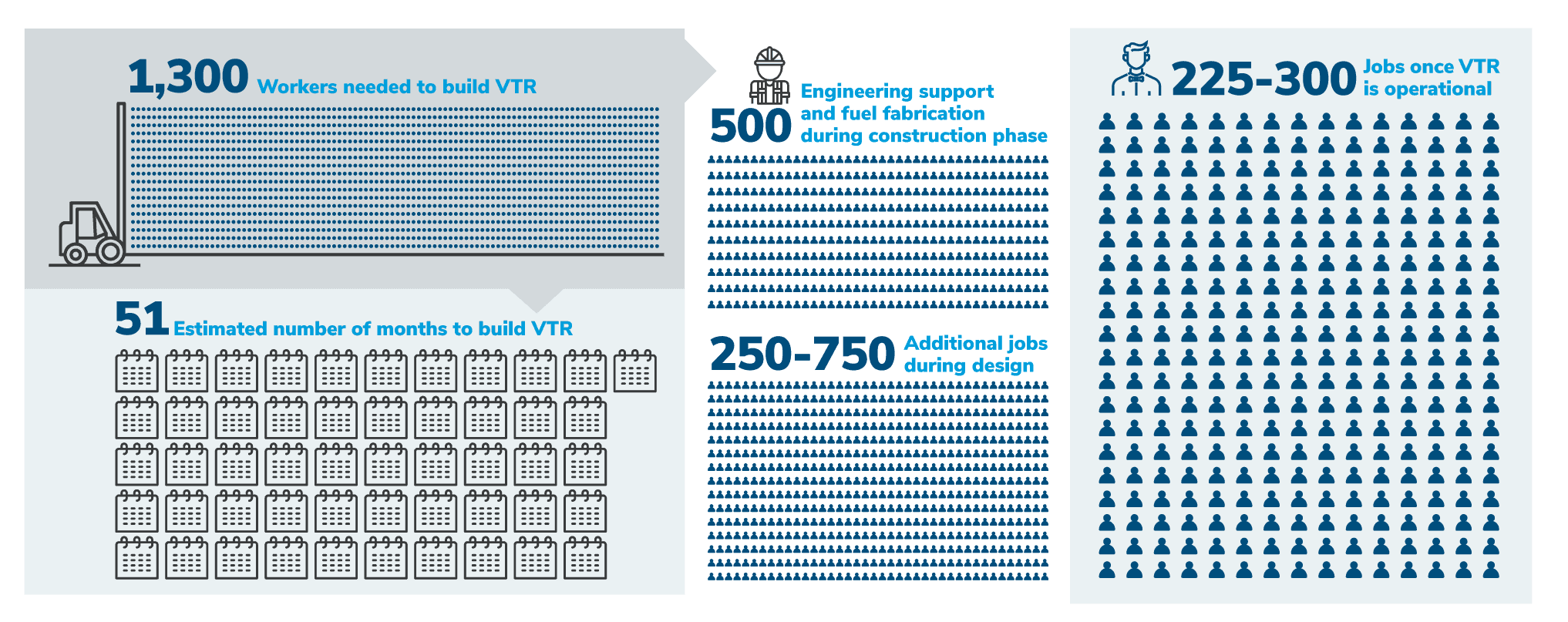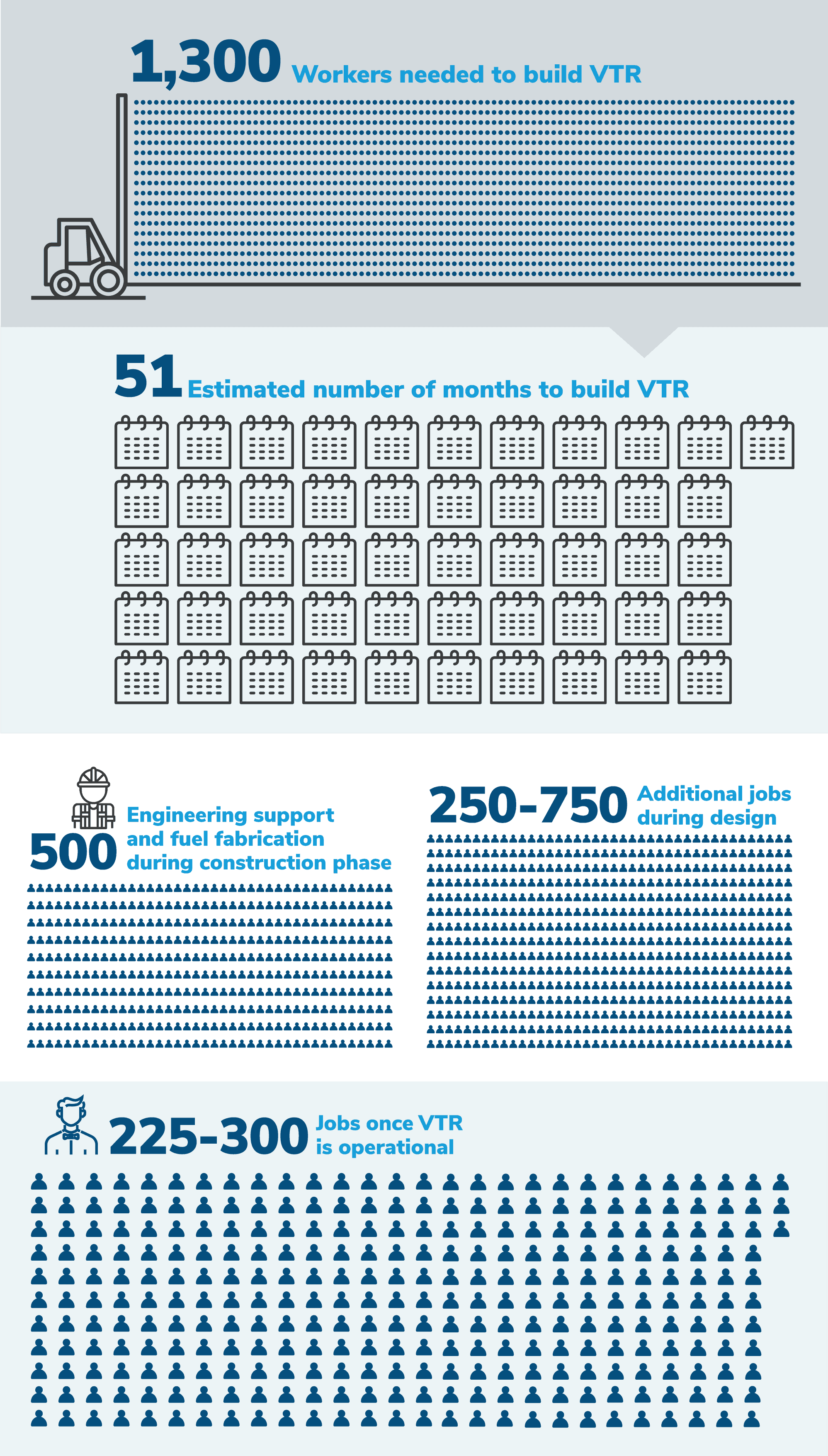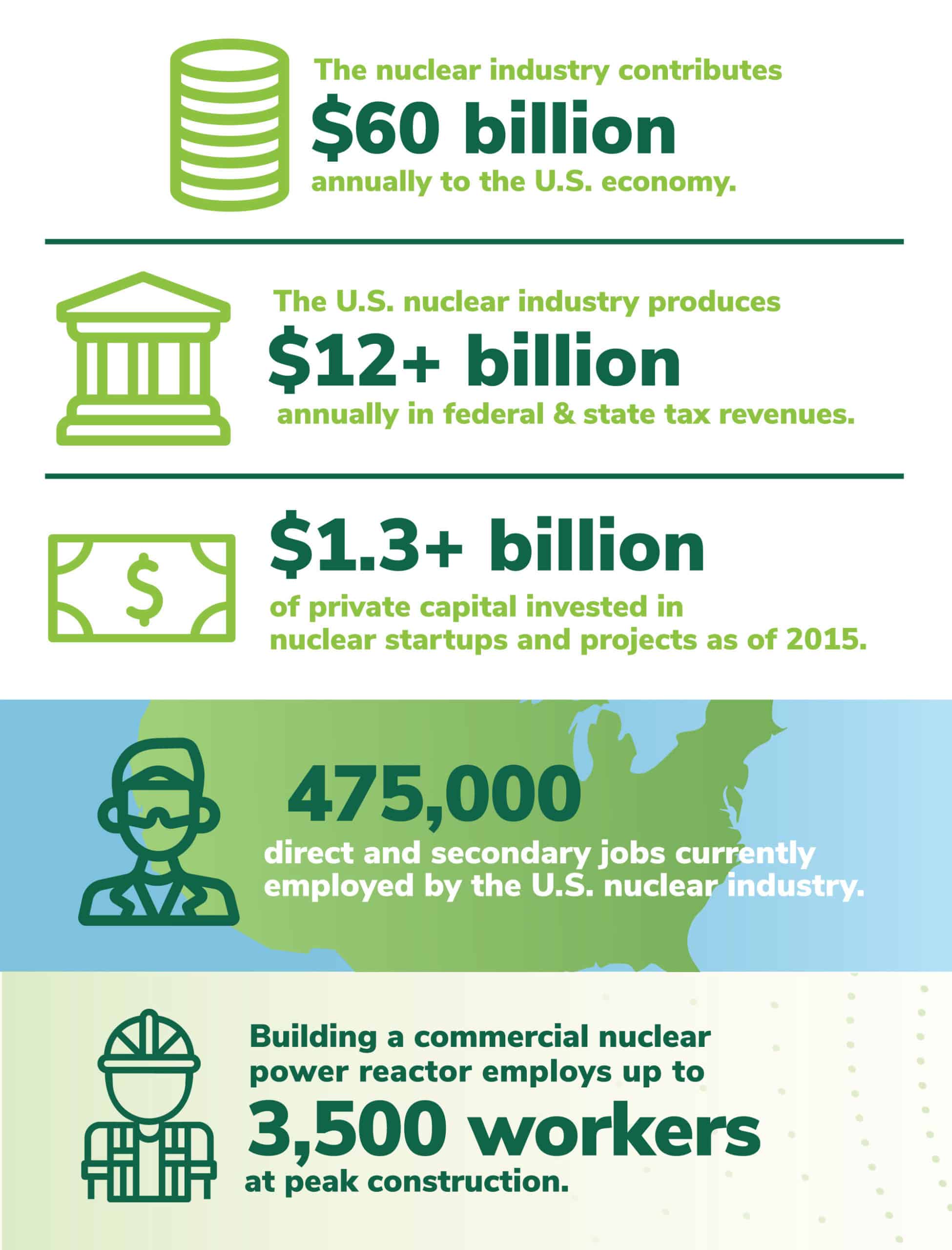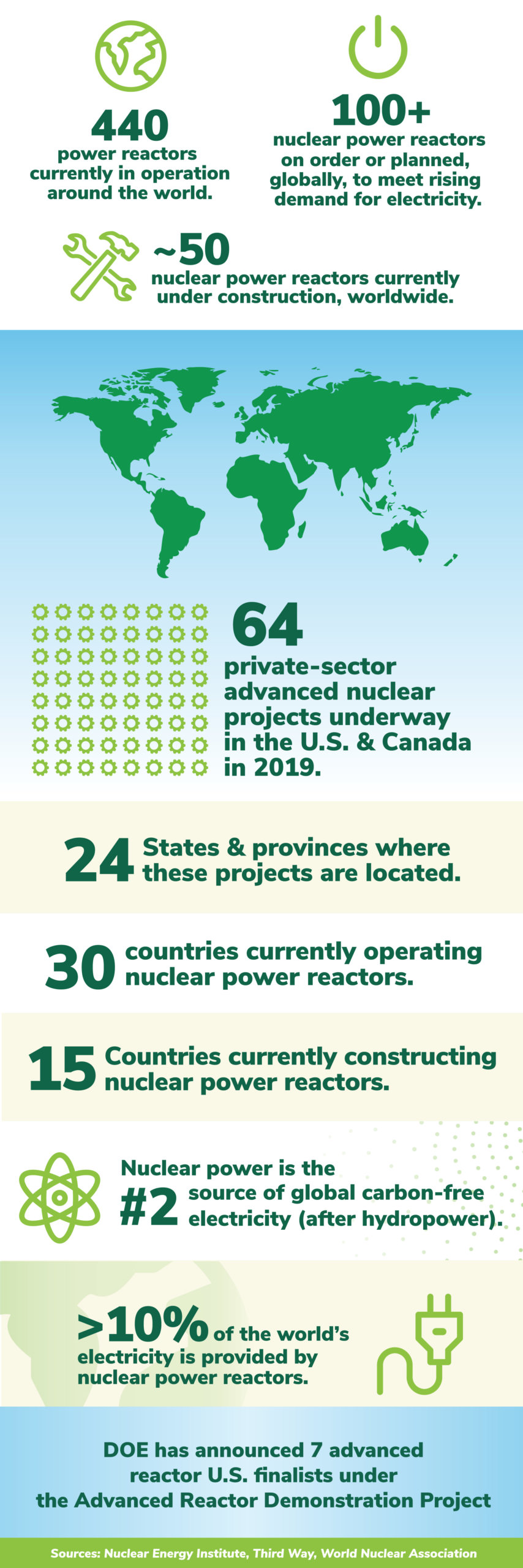How VTR Boosts Economies, Near & Far
Designing, building and operating a scientific research facility of the Versatile Test Reactor’s magnitude will require the ingenuity of nearly 2,000 workers.
How VTR
Boosts Economies,
Near & Far
Designing, building and operating a scientific research facility of the Versatile Test Reactor’s magnitude will require the ingenuity of nearly 2,000 workers.
For the past two years, more than 350 experts from universities, national labs and industry partner organizations have been developing a conceptual design, cost estimate and schedule for VTR. For many of these experts, VTR is the first reactor they will work on from inception to completion. This experience will provide invaluable professional development to the current and future nuclear workforce.
As the Versatile Test Reactor enters the next phase, hundreds of workers will be needed to finalize the design, build the facility, fabricate fuel and eventually operate the reactor. These new jobs will infuse local, regional and national economies with millions of dollars in direct-labor income and tax revenue during construction.
The Advanced Reactor Demonstration Program will also generate an economic ripple effect as companies supply construction materials, professional services and specialized parts and components. Once operational, VTR will employ hundreds of people and become an international research center that draws scientists and engineers from around the country and world.
For the past two years, more than 350 experts from universities, national labs and industry partner organizations have been developing a conceptual design, cost estimate and schedule for VTR. For many of these experts, VTR is the first reactor they will work on from inception to completion. This experience will provide invaluable professional development to the current and future nuclear workforce.
As the Versatile Test Reactor enters the next phase, hundreds of workers will be needed to finalize the design, build the facility, fabricate fuel and eventually operate the reactor. These new jobs will infuse local, regional and national economies with millions of dollars in direct-labor income and tax revenue during construction. The Advanced Reactor Demonstration Program will also generate an economic ripple effect as companies supply construction materials, professional services and specialized parts and components.
Once operational, VTR will employ hundreds of people and become an international research center that draws scientists and engineers from around the country and world.
How VTR Creates Direct Jobs
How VTR Creates Direct Jobs


A growing number of countries are investing in new nuclear technologies to supply clean electricity to their citizens while also reducing carbon emissions. VTR joins a long line of nuclear industry projects driving jobs, workforce development and tax revenue growth in economies around the world.
A growing number of countries are investing in new nuclear technologies to supply clean electricity to their citizens while also reducing carbon emissions. VTR joins a long line of nuclear industry projects driving jobs, workforce development and tax revenue growth in economies around the world.
How VTR Boosts U.S. Nuclear Industry and Workforce Development
Economic Impact of Nuclear Energy
VTR enables advanced nuclear technologies that will expand the economic benefits of nuclear energy.
Economic Impact of Nuclear Energy
VTR enables advanced nuclear technologies that will expand the economic benefits of nuclear energy.



Nuclear Energy Offers a Diversity of Jobs
The nuclear energy industry creates lasting, high-paying jobs for people from a wide range of fields and educational backgrounds. Recruiting from universities, community colleges, the military and the trades, nuclear power plants provide high-quality jobs to the whole community.
Not Just Nuclear Engineering Jobs

FAQs
Where will VTR be located?
The U.S. Department of Energy (DOE) has proposed building the VTR complex at one of its national laboratory sites and has contracted with a company to evaluate locations at Idaho National Laboratory and Oak Ridge National Laboratory in accordance with the National Environmental Policy Act (NEPA).
When will VTR be built?
If final design and construction begin in 2023, VTR will be fully operational by the end of 2026, pending funding appropriations by Congress.
Why would/should the government invest in research infrastructure?
The federal government has long invested in large-scale scientific research infrastructure that universities could not afford to support innovation and technology development and help ensure U.S. leadership in science and engineering. Researchers from universities, industry and government agencies can access these capabilities, which support scientific discovery and the development of revolutionary new technologies.
Is this being built for industry? If so, shouldn’t they pay for it?
VTR will operate as a scientific user facility and will support research and development for private industry, national labs, universities and international entities. Just as with other DOE scientific user facilities, VTR will be accessed through contracts, grants and other methods that help offset costs.
In addition, VTR is exploring cost-share arrangements through the development of public-private partnerships with industry and other partners. The U.S. government, through national labs and agencies, has long provided research infrastructure and tools needed to advance technologies and innovation across the public and private sectors.




